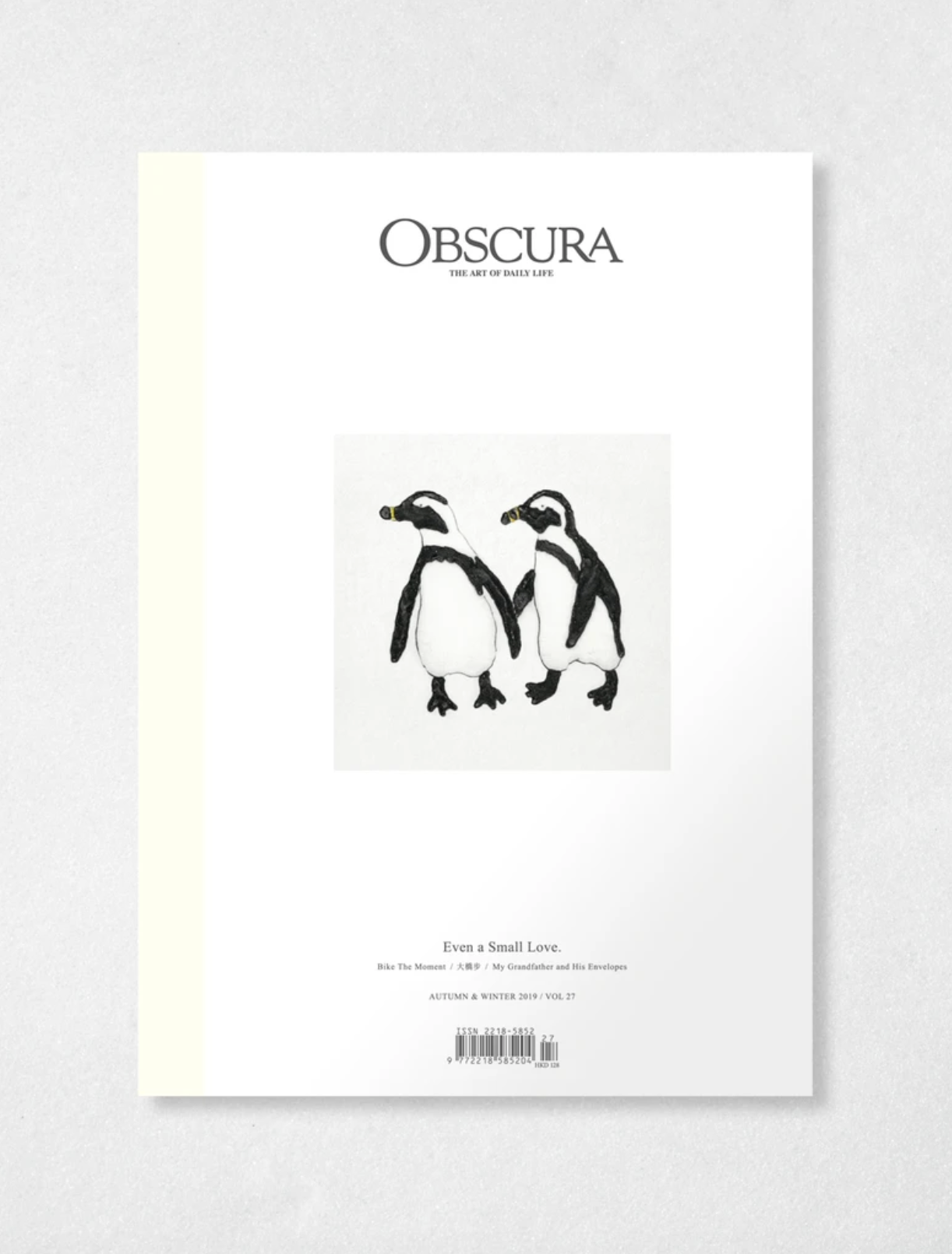
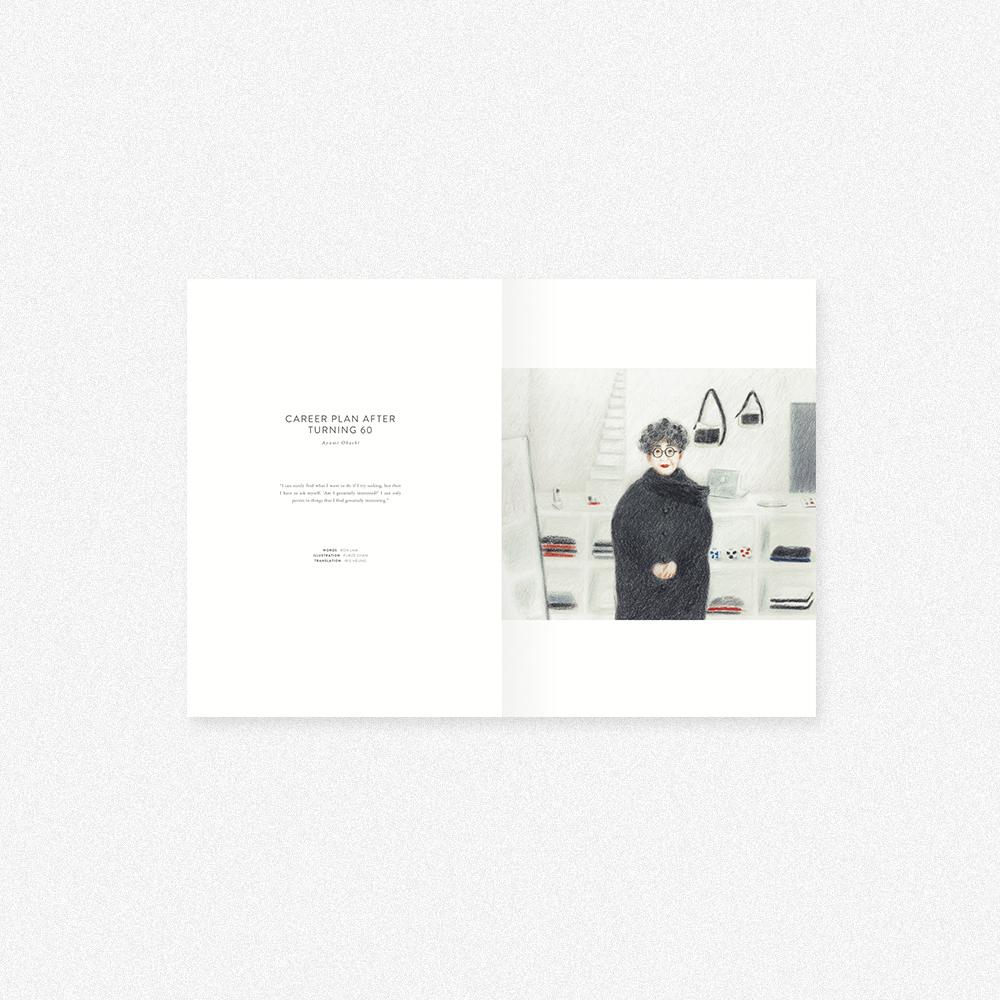
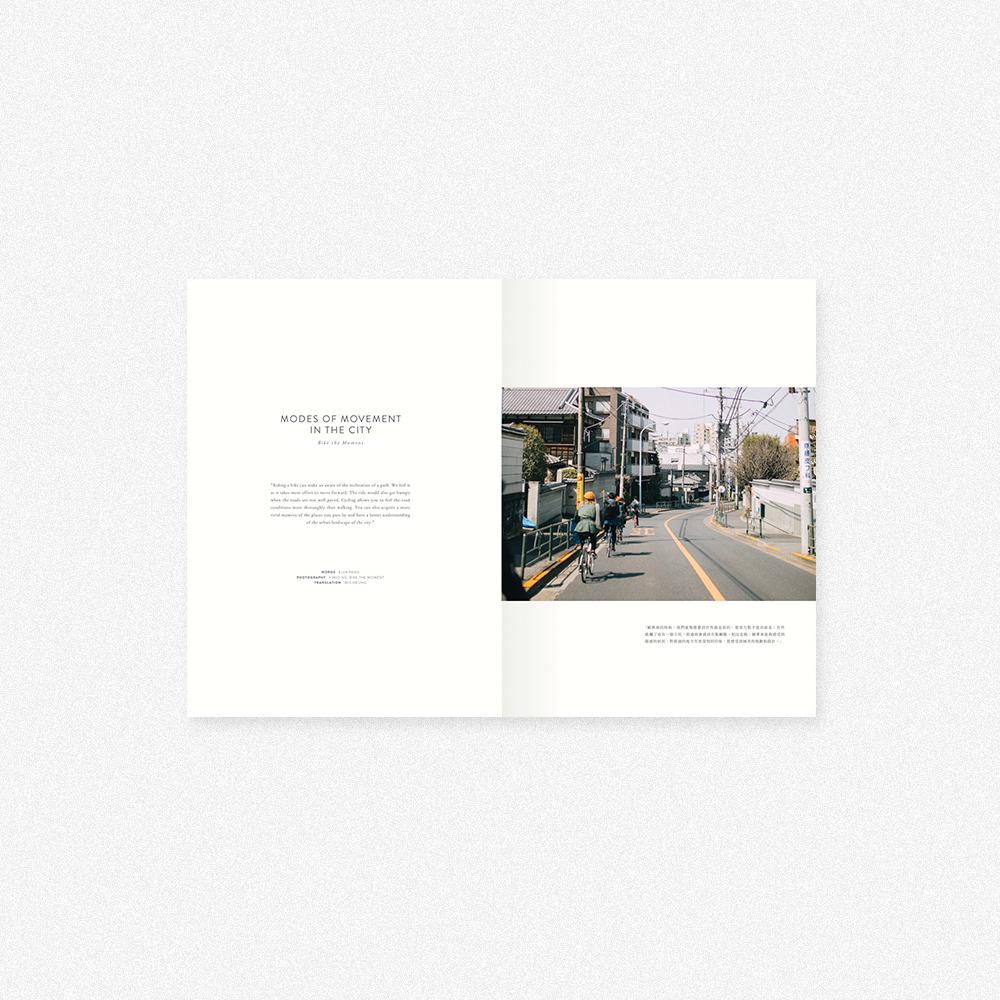
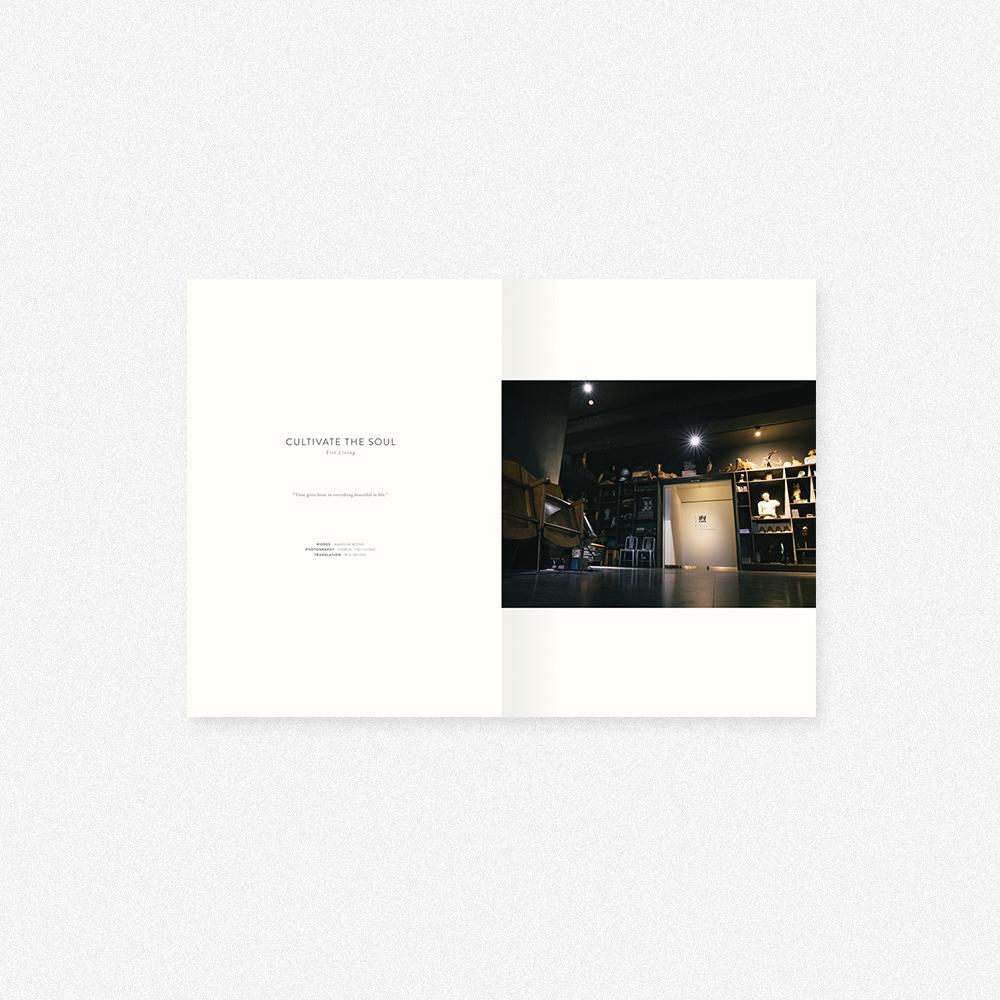
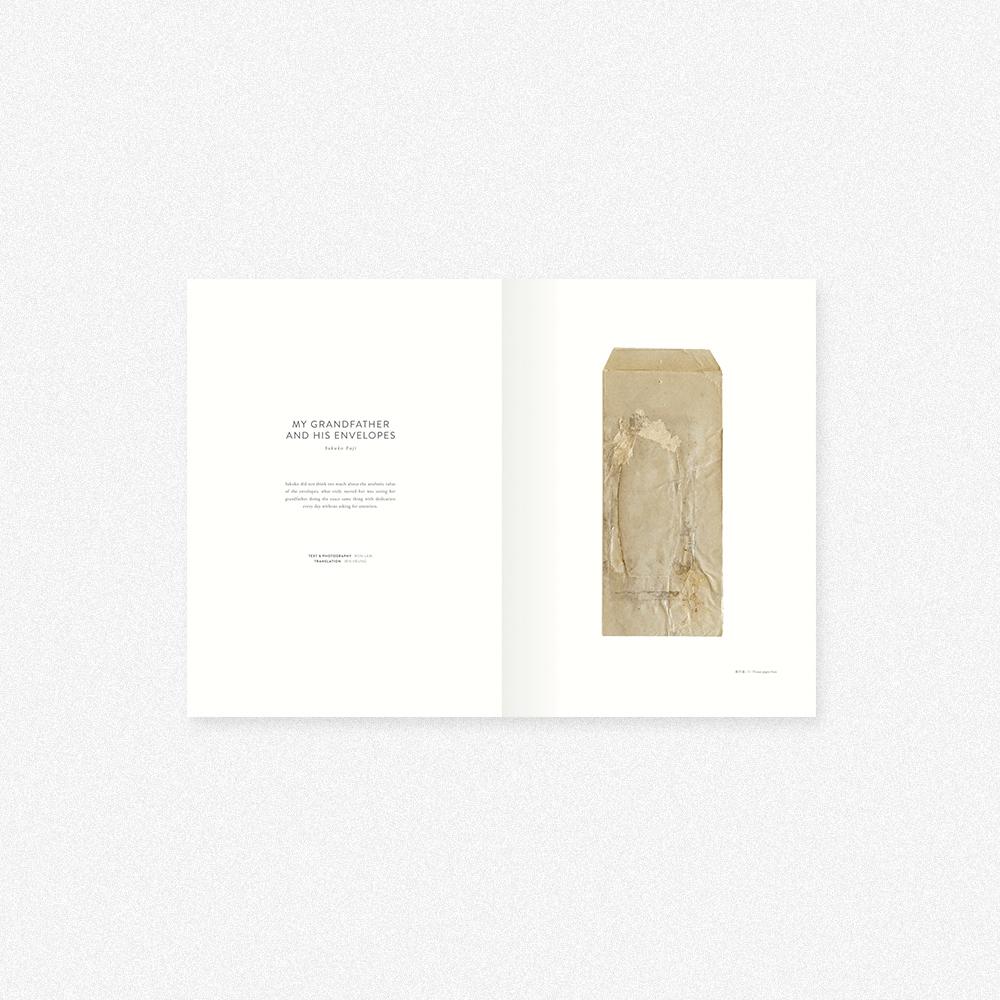
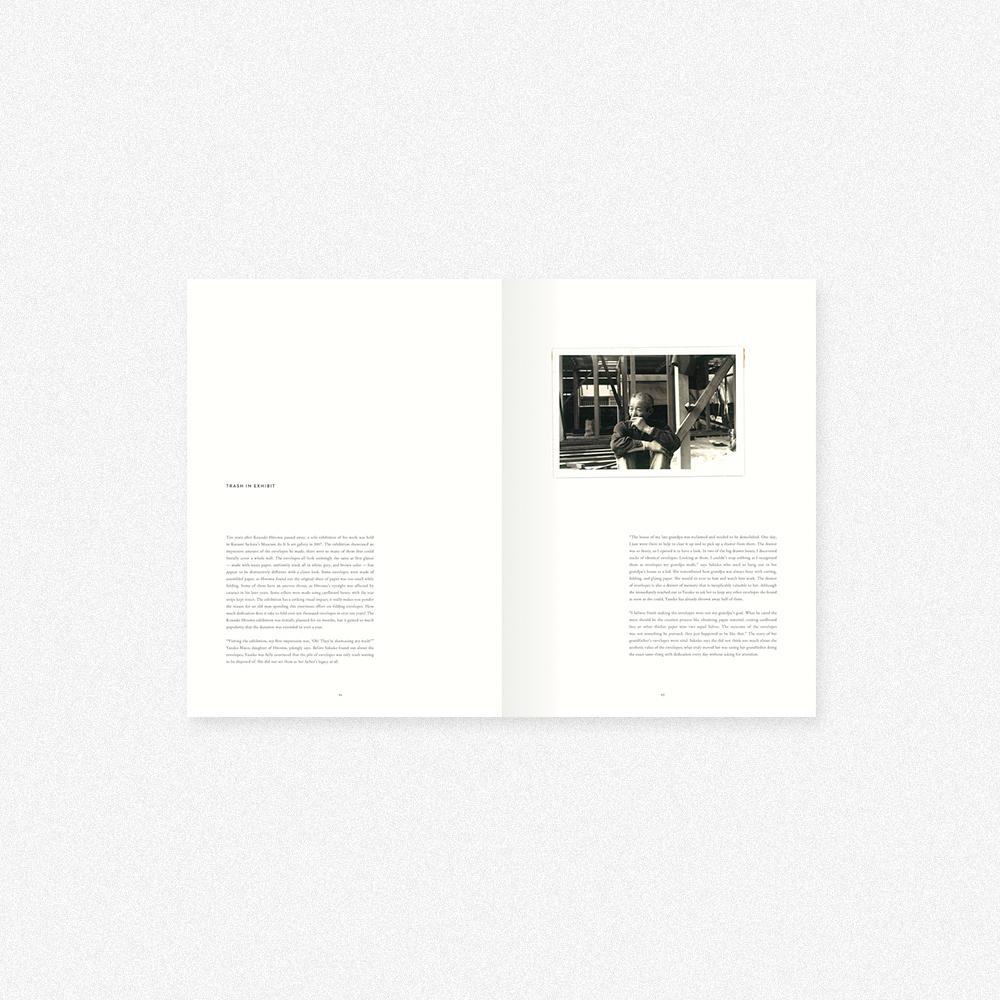
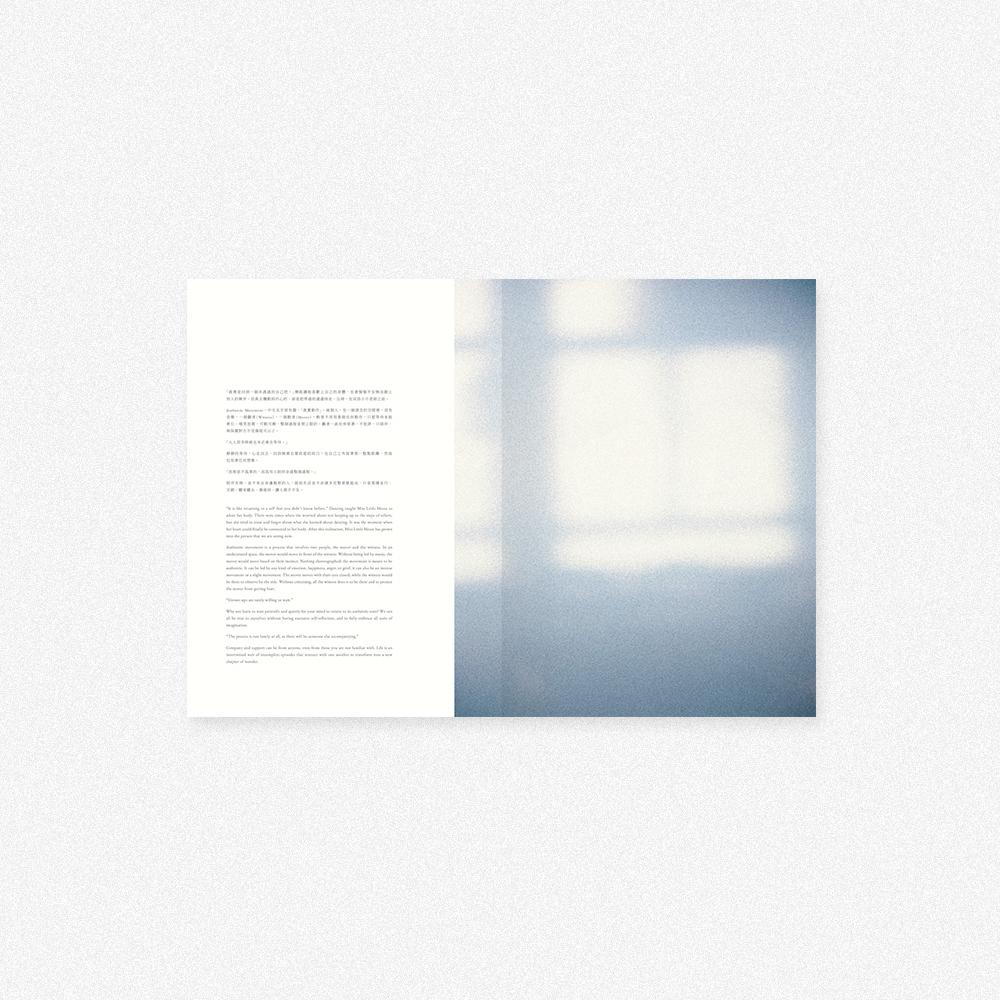
Obscura Magazine Vol 27: Autumn & Winter 2019
obscura-vol27
OBSCURA Volume 27 / Autumn & Winter 2019
“Even a Small Love.”
Bike The Moment / 大橋步 / My Grandfather and His Envelopes
微小的愛
“If you want to change the world, go home and love your family.”
—— Mother Teresa
重點故事包括:
1. CAREER PLAN AFTER TURNING 60 / AYUMI OHASHI
內文節錄
朋友們得知我採訪大橋步時,都興奮不已。我們這一代三十來四十歲的媒體工作者,不少都是仰望著她的腳印成長的。十七年前,她62歲,創辦了首本雜誌《Arne》;七年後,在《Arne》快將停刊時,我才在日本的書店中巧遇這本數十頁的小雜誌,並深深被打動。那時已在雜誌當了幾年編輯,對雜誌的製作有太多太堅硬的觀念——受訪者的照片該怎樣表現出其個性、要怎樣建立翻頁面時的節奏、專題的首頁要做得引人入勝……《Arne》都一一打破了。看似隨手拍下的照片、標題下得平平實實、烹飪主題的照片不會過於堆砌……表現方式都生活化得很,而編輯、撰文、攝影、插畫,都是同一人。做雜誌,原來不一定得堂而皇之,一人之力有一人之力的做法。我頓時覺得世界似乎軟柔起來,不用練得體格魁梧,不用身手矯健,也能於內裡自在盪遊。
2. MODES OF MOVEMENT IN THE CITY / BIKE THE MOMENT
內文節錄
星期日的早上,與Hughes約好了在上環的西港城見面,他從上環一邊騎單車過來,電車在他身邊駛過, 發出叮叮聲響。「假日早上,陽光灑落在剛睡醒的城市,有種讓人著迷的朦朧的狀態。寧靜的小城, 沒有平日繁忙與壓迫,路人和汽車都特別的少,騎單車時感到特別的暢快。」中西區充滿了歷史感的 建築,騎車經過歐式建築、舊式的藥材店和雜貨店,還有古老大樹。Hughes沿著皇后大道西,經過 西營盤,由卑路乍街到達堅尼地城的可可店。「曾經和一班好友騎單車來可可店吃宵夜,騎累了,一起 坐下來邊吃邊聊天。我們不但在和城市建立關係,騎單車也連結了城市裡的人。」沿著海邊來到西環 碼頭,迎來跑步的人、旁邊玩樂的孩子和垂釣的大叔。「日落時的橙海、下雨後的天空之鏡,吸引了 很多人來拍照,這裡由一個貨物裝卸區變成約會、休閒的眾腳點,改變了原有的土地用途,這是城市最有趣的地方。」
3. MY GRANDFATHER AND HIS ENVELOPES / SAKUKO FUJI
內文節錄
「祖父過世後,他原本住的房子因為被收地需要清拆,某天我去幫忙收拾,順便接收一個抽屜櫃子。櫃子沉澱澱的,打開一看,發現其中兩個大抽屜裡,整齊地塞滿了樣式一樣的信封。我看著看著便哭了,是祖父造的信封……」咲子小時候到祖父家玩,祖父總是忙著手上的作業,她偶爾會待在他旁邊,看他怎樣剪裁紙張,怎樣折疊,怎樣黏貼。從抽屜裡翻出了信封,也翻出了她的回憶。她立時請康子把之後發現的信封,也統統留下來,不過那之前,康子其實已把大量的信封扔了一半了。
「我相信祖父定非想像著完成品而做這些信封的,祖父只是為了獲得素材,是去分割紙箱、把厚紙分成兩半等,他沒有刻意,是信封偶然變成這模樣的。」祖父的信封造成了不小的迴響,但咲子說,比起信封的美醜,更感動她的,是祖父每天淡淡然地,嚴謹地重覆做著相同的事的生活方式。
OBSCURA Volume 27 / Autumn & Winter 2019
“Even a Small Love.”
Bike The Moment / 大橋步 / My Grandfather and His Envelopes
We can do small things with great love to change the world.
“If you want to change the world, go home and love your family.”
—— Mother Teresa
Highlighted stories include:
1. CAREER PLAN AFTER TURNING 60 / AYUMI OHASHI
Excerpt
My friends were all excited when learned about my scheduled interview with Ohashi. Many media practitioners of my generation who are now in our 30s or 40s were deeply inspired by her at some point in our careers. Seventeen years ago, Ohashi, at the age of 62, published her own zine, Arne. I only got to encounter Arne magazine seven years after its debut. I was so moved when seeing this mini-zine for the first time at a bookshop in Japan. I was already working as a magazine editor for a few years back then. My job experience had equipped me with a lot of rigid guidelines, for instance, what kind of photography can best illustrate the personality of the interviewee, how to set the reading pace through typesetting, how to create an intriguing front page for a feature, and so on. Arne was different, they managed to break away from all these constraints. Their snapshots were uncalculating. The headlines were simple and straightforward. The photography for the culinary features was unpretentious. The presentation of Arne magazine is so down to earth. I was then surprised to know that it only took one person to handle all the production steps, including editing, writing, photography, and illustration. So a magazine does not necessarily need a full production team, it can also be made by just an individual. I suddenly came to realize the world can be so fluid and gentle. Being strong and agile is not the only way to survive; tenderness can, as well, bring you unexpected results.
2. MODES OF MOVEMENT IN THE CITY / BIKE THE MOMENT
Excerpt
On a Sunday morning, Queenie decided to meet up with Hughes at Western Market in Sheung Wan. So Hughes just biked from Sheung Wan with trams passing next to him, amidst their “ding-ding” sound. “On the morning of a bank holiday, the city slowly gets brightened up by the rising sun, where most people are still lying in bed. This is a fascinating moment. It is all so quiet in contrast to the city’s usual bustling and stressful vibe. The streets are empty, which makes it perfect for cycling.” It is not difficult to spot historical buildings in the Central and Western District. Having a bike ride in this area, you can pass by colonial architecture, traditional Chinese medicine shops, old-fashioned grocery shops, and also many old trees. “I once went to Ho Ho Restaurant by bike with my friends on a late night. We were pretty tired, so we just sat down and talked while enjoying the food there. Cycling connects us with the city, as well as with the people in the city.” Cycling along the shore in the direction of Sai Wan Pier, you can see runners running, children playing and people fishing. “The harbor glows in orange color at sunset, it can also get smooth like a mirror after a rainy day. It is so beautiful that it attracts many people to come and take photographs. This place has transformed from a cargo pier to a spot for couples to date or people to hang out. I am always intrigued by how a place can be used so differently from its original plan.”
3. MY GRANDFATHER AND HIS ENVELOPES / SAKUKO FUJI
Excerpt
“The house of my late grandpa was reclaimed and needed to be demolished. One day, I just went there to help to clear it up and to pick up a drawer from there. The drawer was so heavy, so I opened it to have a look. In two of the big drawer boxes, I discovered stacks of identical envelopes. Looking at them, I couldn’t stop sobbing as I recognized them as envelopes my grandpa made,” says Sakuko who used to hang out in her grandpa’s house as a kid. She remembered how grandpa was always busy with cutting, folding, and gluing paper. She would sit next to him and watch him work. The drawer of envelopes is also a drawer of memory that is inexplicably valuable to her. Although she immediately reached out to Yasuko to ask her to keep any other envelopes she found as soon as she could, Yasuko has already thrown away half of them.
“I believe finish making the envelopes were not my grandpa’s goal. What he cared the most should be the creation process like obtaining paper material, cutting cardboard box or other thicker paper into two equal halves. The outcome of the envelopes was not something he pursued, they just happened to be like that.” The story of her grandfather’s envelopes went viral. Sakuko says she did not think too much about the aesthetic value of the envelopes; what truly moved her was seeing her grandfather doing the exact same thing with dedication every day without asking for attention.
____________________________________________________________
On the cover: illustration by Ayumi Ohashi
Print Details: 136 pages, perfect bound with a white cloth spine, full-color.
Printed in Hong Kong.
Type: PUBLICATIONS









